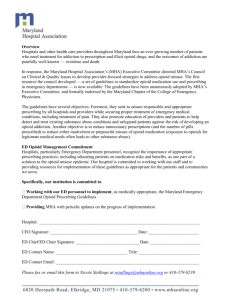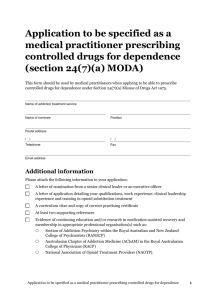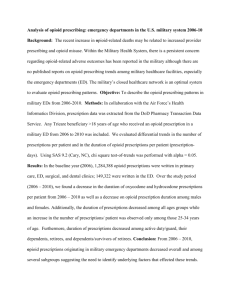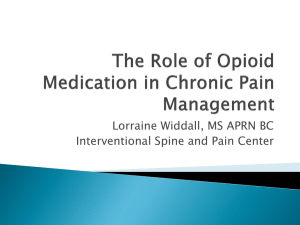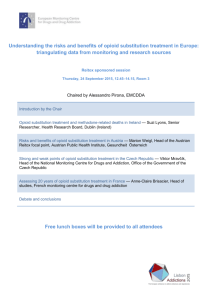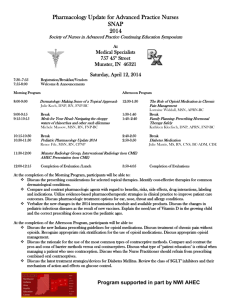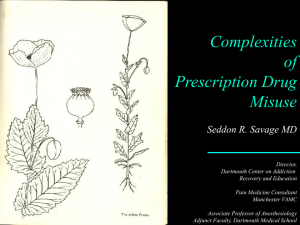optimizing the safe and effective prescribing of opioids for pain
advertisement
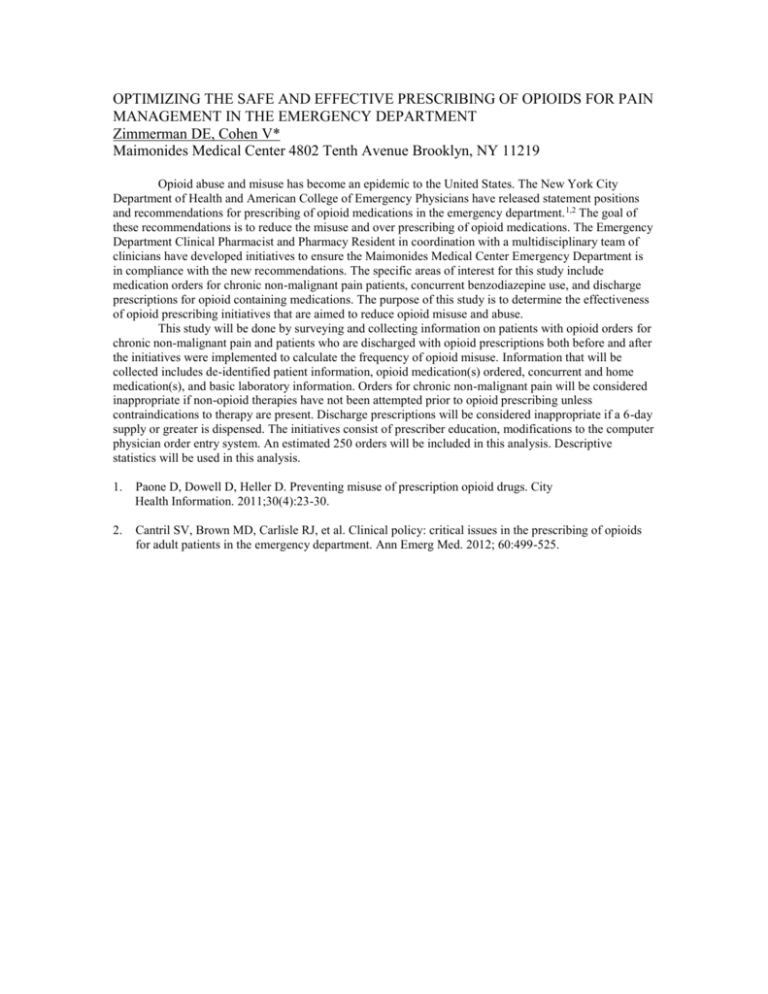
OPTIMIZING THE SAFE AND EFFECTIVE PRESCRIBING OF OPIOIDS FOR PAIN MANAGEMENT IN THE EMERGENCY DEPARTMENT Zimmerman DE, Cohen V* Maimonides Medical Center 4802 Tenth Avenue Brooklyn, NY 11219 Opioid abuse and misuse has become an epidemic to the United States. The New York City Department of Health and American College of Emergency Physicians have released statement positions and recommendations for prescribing of opioid medications in the emergency department. 1,2 The goal of these recommendations is to reduce the misuse and over prescribing of opioid medications. The Emergency Department Clinical Pharmacist and Pharmacy Resident in coordination with a multidisciplinary team of clinicians have developed initiatives to ensure the Maimonides Medical Center Emergency Department is in compliance with the new recommendations. The specific areas of interest for this study include medication orders for chronic non-malignant pain patients, concurrent benzodiazepine use, and discharge prescriptions for opioid containing medications. The purpose of this study is to determine the effectiveness of opioid prescribing initiatives that are aimed to reduce opioid misuse and abuse. This study will be done by surveying and collecting information on patients with opioid orders for chronic non-malignant pain and patients who are discharged with opioid prescriptions both before and after the initiatives were implemented to calculate the frequency of opioid misuse. Information that will be collected includes de-identified patient information, opioid medication(s) ordered, concurrent and home medication(s), and basic laboratory information. Orders for chronic non-malignant pain will be considered inappropriate if non-opioid therapies have not been attempted prior to opioid prescribing unless contraindications to therapy are present. Discharge prescriptions will be considered inappropriate if a 6-day supply or greater is dispensed. The initiatives consist of prescriber education, modifications to the computer physician order entry system. An estimated 250 orders will be included in this analysis. Descriptive statistics will be used in this analysis. 1. Paone D, Dowell D, Heller D. Preventing misuse of prescription opioid drugs. City Health Information. 2011;30(4):23-30. 2. Cantril SV, Brown MD, Carlisle RJ, et al. Clinical policy: critical issues in the prescribing of opioids for adult patients in the emergency department. Ann Emerg Med. 2012; 60:499-525.
